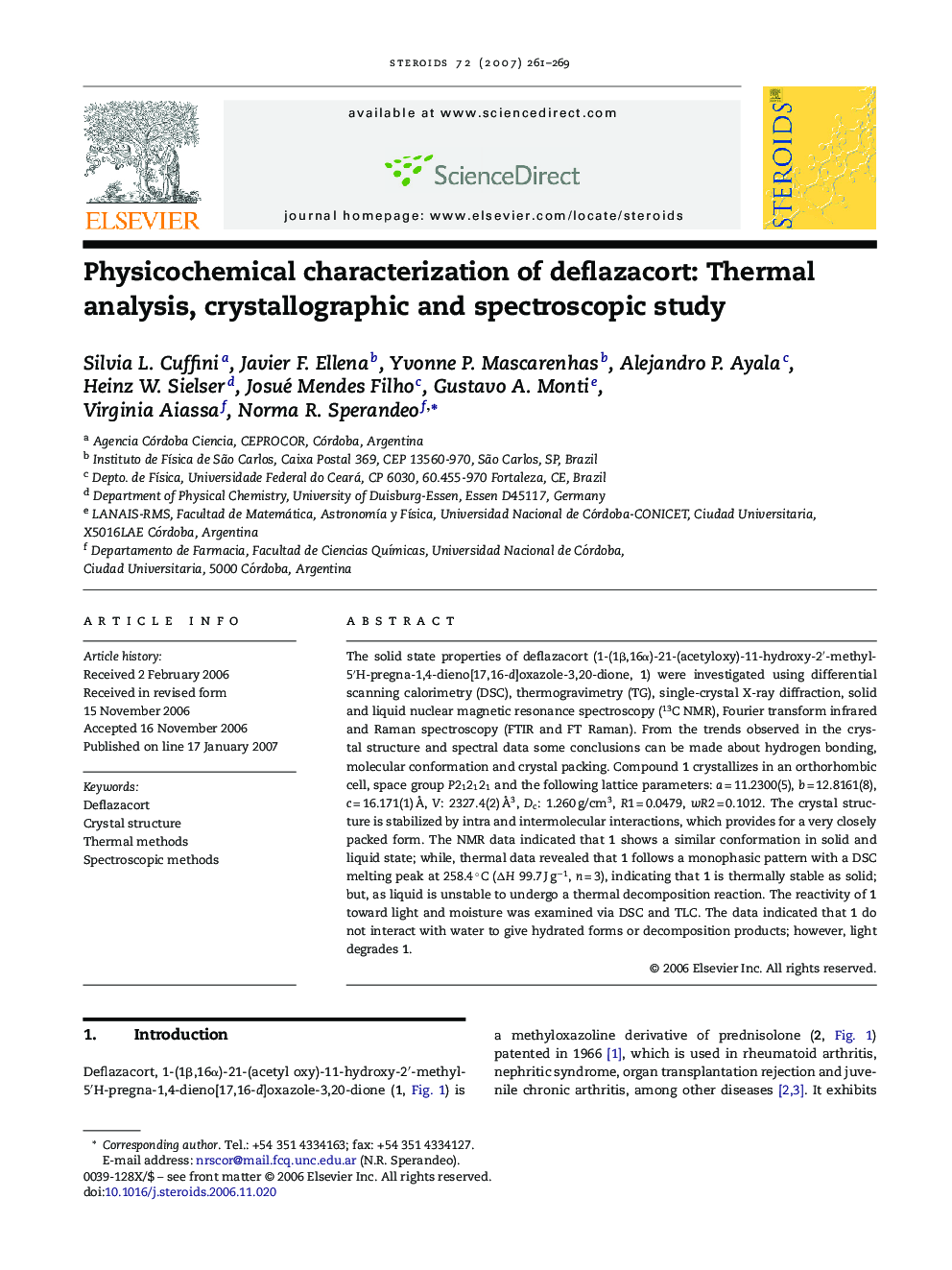| Article ID | Journal | Published Year | Pages | File Type |
|---|---|---|---|---|
| 2028740 | Steroids | 2007 | 9 Pages |
The solid state properties of deflazacort (1-(1β,16α)-21-(acetyloxy)-11-hydroxy-2′-methyl-5′H-pregna-1,4-dieno[17,16-d]oxazole-3,20-dione, 1) were investigated using differential scanning calorimetry (DSC), thermogravimetry (TG), single-crystal X-ray diffraction, solid and liquid nuclear magnetic resonance spectroscopy (13C NMR), Fourier transform infrared and Raman spectroscopy (FTIR and FT Raman). From the trends observed in the crystal structure and spectral data some conclusions can be made about hydrogen bonding, molecular conformation and crystal packing. Compound 1 crystallizes in an orthorhombic cell, space group P212121 and the following lattice parameters: a = 11.2300(5), b = 12.8161(8), c = 16.171(1) Å, V: 2327.4(2) Å3, Dc: 1.260 g/cm3, R1 = 0.0479, wR2wR2 = 0.1012. The crystal structure is stabilized by intra and intermolecular interactions, which provides for a very closely packed form. The NMR data indicated that 1 shows a similar conformation in solid and liquid state; while, thermal data revealed that 1 follows a monophasic pattern with a DSC melting peak at 258.4 °C (ΔH 99.7 J g−1, n = 3), indicating that 1 is thermally stable as solid; but, as liquid is unstable to undergo a thermal decomposition reaction. The reactivity of 1 toward light and moisture was examined via DSC and TLC. The data indicated that 1 do not interact with water to give hydrated forms or decomposition products; however, light degrades 1.
